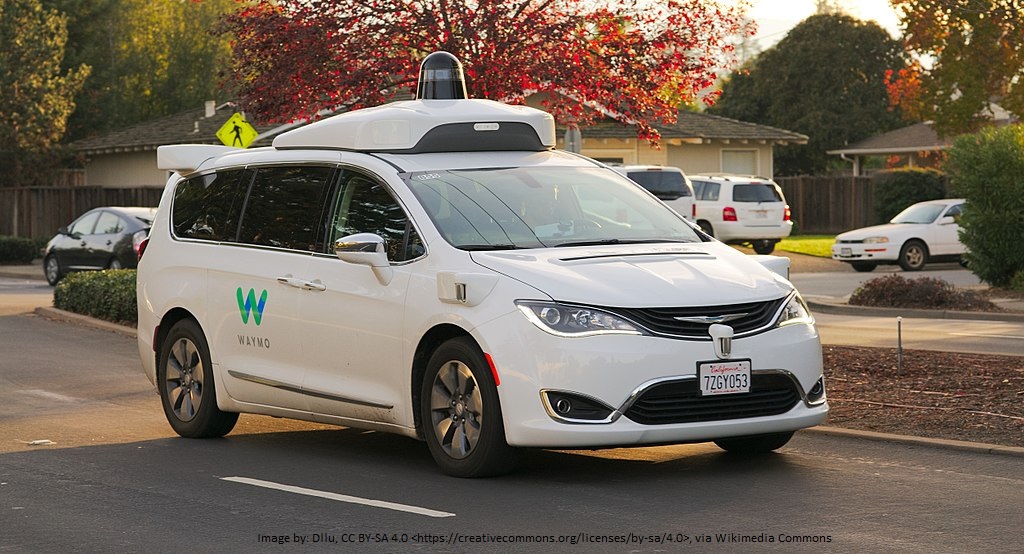According to Bloomberg the top 5 leaders in autonomous vehicle are…
- Waymo
- Cruise
- Argo AI
- Aurora
- Aptiv
Waymo. Is the self-driving car division of Alphabet Inc, which is the holding company for Google and many other former Google subsidiaries. Why Google split like this, we’ll explain another day.
It’s thought Waymo remains ahead of the competition by a year or more, based on several factors.
Early 2020, the company announced that it had raised $2.3 billion from outside investors (not Google), including venture capital giant Andreessen Horowitz and car dealer AutoNation.
Waymo already carries fares with no safety drivers in a handful of the Chrysler Pacifica vehicles in suburban Phoenix, with 20 million miles logged on public roads.
Cruise. General Motors bought Cruise Automation in 2016 for $1 billion, after they discovered Cruise had made much more progress in how to make self-driving cars make complicated turns.
With a further $9 billion in investment from parent GM and partners Honda, Softbank Vision Fund and T. Rowe Price, Cruise are set to launch their autonomous ride-hailing service to the public, which has been beta tested on the streets of San Francisco with their own employees.
Argo AI. In Ford and VW two of the worlds biggest car makers have come together, to jointly develop autonomous and electric vehicles.
VW Group has invested $2.6 billion in capital and assets into Argo AI, the autonomous vehicle start-up burst onto the scene two years ago with $1 billion in backing from Ford.
VW has also included Autonomous Intelligent Driving, their self-driving subsidiary that was launched just two years ago by VW to develop their own autonomous vehicle technology.
Ford and VW have also announced plans to expand their global alliance to include electric vehicles.
Aurora. Its co-founders previously led automated driving development for Alphabet, Tesla, and Uber, providing them with years of experience.
The three-year-old start-up has had some big-name investors, including Hyundai Motor Group, Amazon.com Inc., and Sequoia Capital, amassing $700 million.
Aurora is testing its self-driving software on vehicles from automakers Hyundai and Fiat Chrysler. But won’t share intellectual property, insisting on remaining a neutral player in the race to autonomy.
Aptiv. Delphi Automotive, the parts unit of bankrupt GM, split out its powertrain business, and is the rare auto supplier to have successfully transformed into a serious autonomous vehicle player.
It did so with a string of tech acquisitions, buying the likes of self-driving start-up Nutonomy, to piece together a self-driving system it’s developing with Intel Corp.
In 2019, Aptiv entered a 50-50 joint venture with South Korea’s Hyundai Motor Group. Together, the companies say they expect to have a production-ready autonomous driving platform by 2022.
As well as the top 5, you’ve got many other players developing their own self-driving autonomous vehicles, companies like Uber, Tesla, Baidu, BMW, and Toyota.
It’s an interesting time for autonomous vehicle makers, not only do they need to make their vehicles safe and economically viable (with the UK government (at least) banning the sale of petrol and diesel vehicles after 2030), they will have to incorporate electric vehicles into their business models.
Initially, it would be fair to suggest the most obvious market of autonomous vehicles is taxi cabs, including chauffeur rental services.
Then we’d suggest the large car rental companies (such as Enterprise, Hertz, and Avis) will get in on the action, as driverless technology is likely to reduce accidents, insurance and provide much more control how vehicles are driven, which will reduce their overall operating costs.
Finally, they’ll hit the mass market, but in what form?
Well, we think and eventually. The public won’t own their own vehicle, they’ll subscribe to an autonomous vehicle service paying a monthly fee for the type of service and class of vehicle.
Much like you do with Netflix, with packages ranging from £5.99 to £13.99, depending on the type of service you require.
TV monthly subscriptions are a great analogy to use, as you’ve now got loads of choice, like Netflix, Apple TV, Sky, Amazon, BritBox, BT, Virgin, Disney, and many others.
You simply decide which provider you want and the package that best suits you, and away you go.
Driverless cars will eventually be the same, but it will become a transportation subscription. You’ll sign up to Waymo (Google), Cruise (GM and Honda), Argo AI (VW and Ford), Tesla, BMW etc. Then choose the standard of vehicle, your mileage radius and number of maximum monthly journeys.
You’ll be able to either pre-book your journeys or hail an immediate ride through your chosen manufactures app. I’m sure they’ll also have pay as you services too, much like Uber already has.
Although, in this autonomous vehicle development stage, manufacturers must plan with electric vehicles in mind, as charging these vehicles in the most efficient way will be the key to keeping their costs low and in providing the best possible service to their customers.
Electric vehicles will start to take off for the mass market in 2021, due to range anxiety being addressed, the availability of affordable and fast home and workplace charging points, government grants for electric vehicles and home and workplace EV chargers, and EV’s reducing in price.
Which means by the time driverless vehicles come along for the mass market, most people will have transitioned to an electric vehicle and will be competent with home, workplace, or street charging points.
And charging an electric vehicle will become a habit, and not be such a time-consuming exercise, with battery technology advancing fast. We wouldn’t bet against home charging taking no more than an hour, workplace charging within 30 minutes fast street charging 10 minutes or so.
Which gives the autonomous vehicle makers a challenge to launch a rental subscription service in the future, as they need to make their service is completely hassle free, with no stops for charging and enough autonomous electric vehicles in the network, to provide a fast delivery of service.
If we look to China’s hi-tech city of Shenzhen, it has reportedly become the largest EV charging station in the world, as a second phase of construction bring fast EV chargers to a total 637.
The station is used to charge Shenzhen’s purely electric-powered taxi fleet, which consists mostly of BYD e6 wagons and, it is reported by South China Morning Post to total around 22,000 vehicles.
China claim that the Shenzhen charging station is the world’s largest, and blows a previous claim made by Germany’s Sortimo that late last year embarked on a project to install 144 charging stations halfway between Stuttgart and Munich.
We can see electric vehicles are the future, with Boris and UK government betting on them to help hit the UK’s emission reduction targets. But as a nation we must also invest further (and heavily) in the electric vehicle charging points needed, at home, at the workplace and in public places.
While some critics have expressed concern at the incredible amount of energy needed in the future to charge electric vehicles, it’s important to note that in terms of carbon emissions, electric vehicles are still more efficient than combustion vehicles when powered off the grid.


